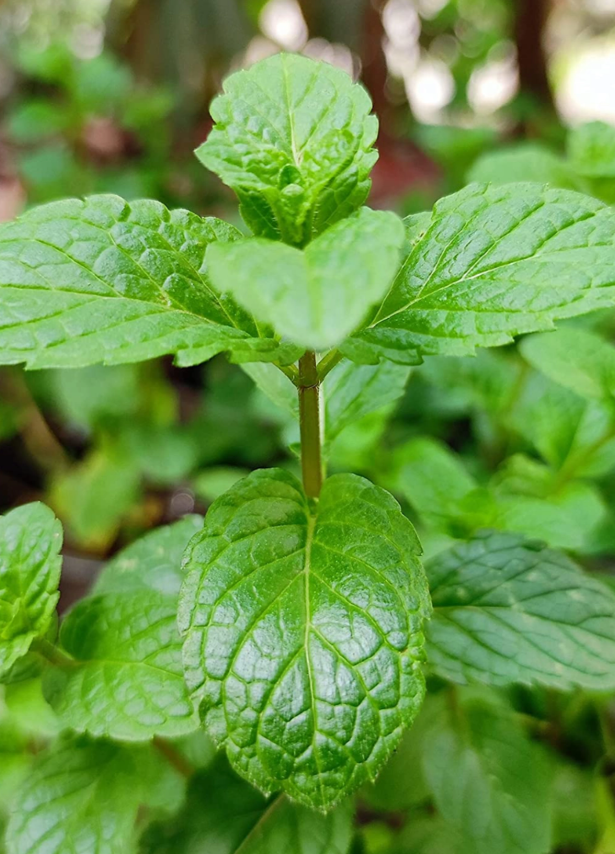Mint Leaves Plant
Perennial herb to 0.6 m, Mint yields aromatic leaves for culinary use. Eurasian native, thrives in moist, shaded conditions. Edible and medicinal, ideal for teas and garnishes.

Habit
Perennial herb
Height
0.3-0.6 m
Growth
Fast
Soil
Well-drained, fertile
Shade
Part shade to full sun
Moisture
Moderate
Edible
Yes (leaves)
Medicinal
Yes (digestive aid)
Origin
Europe/Asia
Climatic Condition
Temperate/Tropical
Temperature (°)
15-25
Humidity (%)
60-80
Potting media
Loam+Compost
Fertilizers
NPK(5:10:10)
Watering
Every 2-4 days
Plant Weight
~0.1-0.5 kg
Flowering Time
Summer
Soil Ph level
6.0-7.0
Water Ph level
6.0-7.0
Soil EC
0.5-1.5 mS/cm
Yield Per Plant
~0.1-0.3 kg leaves
NPK ratio
5:10:10
life Span
2-5 years
Health Benefits
Digestive aid, cooling
Suggested Grow Media or Potting Mix ?
50% loam, 30% compost, 20% sand
Suggested Fertigation/Fertilizers
5:10:10 weekly
Common Diseases and Remedies
Powdery mildew, rust, verticillium wilt, anthracnose, spider mites, mint root borer
White powdery growth on leaves, orange or yellow pustules on leaves and stems, wilting and yellowing leaves with dark veins, dark brown or black spots on leaves, webbing and stippling on leaves, wilting plants with damaged roots
Apply neem oil or sulfur spray, improve air circulation, remove and destroy affected leaves, use resistant varieties, improve drainage, apply insecticidal soap or neem oil, remove affected plants and rotate crops
Fungicides with myclobutanil or sulfur, fungicides with mancozeb, fungicides with chlorothalonil, fungicides with azoxystrobin, miticides with abamectin, insecticides with carbaryl

